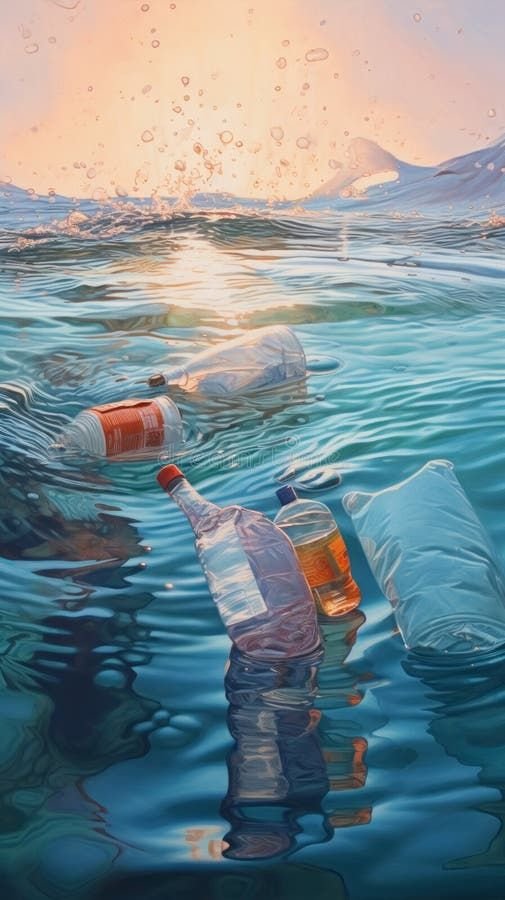Introduction: A Global Environmental Emergency
Every year, over 8 million tons of plastic waste flow into the world’s oceans—a staggering figure that represents one of the most pressing environmental crises of our time. This growing influx of plastic, ranging from single-use packaging to microscopic particles, is devastating marine ecosystems, endangering human health, and threatening global economies that rely on clean seas.
From the remote shores of uninhabited islands to the deepest trenches of the ocean, plastic is now virtually everywhere. Despite global awareness campaigns and cleanup initiatives, the problem is escalating at an alarming rate. If urgent action is not taken, experts warn that by 2050, there could be more plastic than fish in the ocean by weight.
The Journey of Plastic: From Land to Sea
Most plastic pollution originates on land. Poor waste management, industrial activities, littering, and stormwater runoff are the main culprits. Lightweight plastics are easily carried by wind or rain into streams, rivers, and drainage systems that ultimately flow into the ocean.
Once in the sea, plastic waste can travel thousands of miles, breaking down into microplastics that infiltrate the food chain or entangling marine life in its larger forms. From the equator to the poles, there is no marine environment untouched by plastic.
The Scale of the Crisis: Shocking Statistics
The numbers paint a bleak picture:
- Over 400 million tons of plastic are produced each year.
- 8–12 million tons of that plastic end up in the oceans annually.
- More than 5 trillion pieces of plastic are currently floating in the world’s oceans.
- Every minute, the equivalent of one garbage truck of plastic is dumped into the sea.
What’s more alarming is that plastic doesn’t biodegrade. Instead, it breaks into smaller fragments known as microplastics, which can persist in the environment for hundreds of years.
Marine Life Under Siege
Plastic pollution is taking a devastating toll on marine ecosystems. More than 700 species of marine animals are known to be affected by plastic waste. These effects include:
- Ingestion: Sea turtles often mistake plastic bags for jellyfish, while seabirds consume bottle caps and plastic fragments. This ingestion can block digestive tracts, leading to starvation and death.
- Entanglement: Dolphins, seals, and whales frequently become entangled in plastic fishing lines and six-pack rings, which can cause injuries, drowning, or strangulation.
- Toxic Exposure: Plastics leach harmful chemicals into the water, which accumulate in the tissues of marine organisms and move up the food chain.
In 2024, a dead sperm whale washed ashore in the Philippines with over 40 kilograms of plastic waste in its stomach—a harrowing example of how widespread and deadly this problem has become.
Human Health at Risk
Plastic in the oceans doesn’t stay there. It returns to us through the food we eat, the water we drink, and even the air we breathe.
- Microplastics have been found in table salt, bottled water, and seafood.
- A recent study found that the average human may ingest up to 5 grams of plastic per week—the equivalent of a credit card.
- Scientists are still researching the long-term health effects, but early studies link plastic-related chemicals to hormonal imbalances, developmental issues, and cancer risks.
As the plastic crisis grows, so too does concern about its impact on public health.
Economic Impacts on Coastal Communities
Plastic pollution also inflicts a heavy economic burden. Coastal cities and tourism-based economies are particularly vulnerable:
- Tourism suffers when beaches are littered with plastic debris.
- Fisheries lose income as plastic contaminates seafood and damages equipment.
- Shipping industries face navigation hazards from floating waste.
- Cleanup operations are costly, often running into billions of dollars annually worldwide.
A 2023 report from the United Nations Environment Programme (UNEP) estimates that marine plastic pollution costs the global economy $13 billion per year.
The Problem with Single-Use Plastics
Single-use plastics—such as straws, plastic bags, bottles, and food wrappers—account for the majority of ocean plastic waste. These items are used briefly but persist in the environment for centuries.
Despite growing bans and restrictions in several countries, global production of single-use plastics is still on the rise, driven by convenience, low cost, and inadequate waste infrastructure in many regions.
What’s Being Done: Global Efforts to Combat Plastic Pollution
The plastic pollution crisis has sparked a variety of international responses:
1. Legislation and Bans
- Countries like Kenya, Rwanda, and Bangladesh have implemented strict bans on plastic bags.
- The European Union has banned several single-use plastic items, including straws and cutlery.
- Over 170 nations have pledged to “significantly reduce” plastic use by 2030 under the UN’s environmental agreements.
2. Corporate Responsibility
- Multinational companies are adopting eco-friendly packaging and setting plastic reduction targets.
- Some brands now use recycled ocean plastic in their products, such as shoes, apparel, and bottled water.
3. Innovative Solutions
- Scientists are developing biodegradable alternatives to plastic made from seaweed, algae, and cornstarch.
- AI-powered trash booms and autonomous drones are being used to collect ocean waste from rivers and harbors.
- Circular economy models are promoting reuse and recycling instead of disposable consumption.
The Role of Ocean Cleanup Projects
Nonprofit organizations like The Ocean Cleanup, 4Ocean, and Plastic Bank are leading large-scale initiatives to clean up plastic from oceans and rivers:
- The Ocean Cleanup launched a massive system in the Great Pacific Garbage Patch, which has removed over 200,000 kilograms of plastic so far.
- 4Ocean employs coastal workers in developing countries to collect plastic and remove it from beaches.
- Plastic Bank creates plastic collection economies in impoverished communities, offering cash or essentials in exchange for plastic waste.
These grassroots and technological efforts are making an impact—but they need widespread support and scaling.
What You Can Do: Simple Steps with Big Impact
While governments and corporations play a key role, individuals also hold power to reduce plastic waste. Here’s how you can help:
- Refuse single-use plastics whenever possible.
- Carry reusable bags, bottles, and containers.
- Support brands that prioritize sustainability.
- Properly recycle plastic waste and educate others.
- Participate in clean-up events in your local area.
Even small lifestyle changes, when adopted on a mass scale, can have a transformative effect on the environment.
Conclusion: Time Is Running Out
The plastic pollution crisis is a man-made problem—and that means it’s solvable. But it requires global cooperation, innovative thinking, and immediate action. The oceans, which cover more than 70% of Earth’s surface and sustain life as we know it, are in peril.
If we fail to act now, future generations will inherit oceans choked with plastic, poisoned food chains, and devastated marine life. But if we rise to the challenge, we can preserve the beauty and biodiversity of our oceans for centuries to come.
The future of our planet—and of all who depend on clean water and a healthy environment—depends on what we do today.


